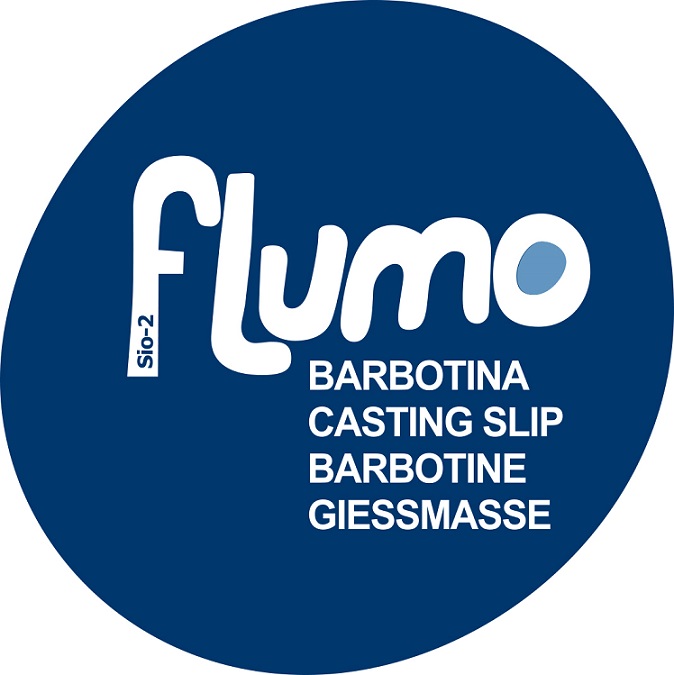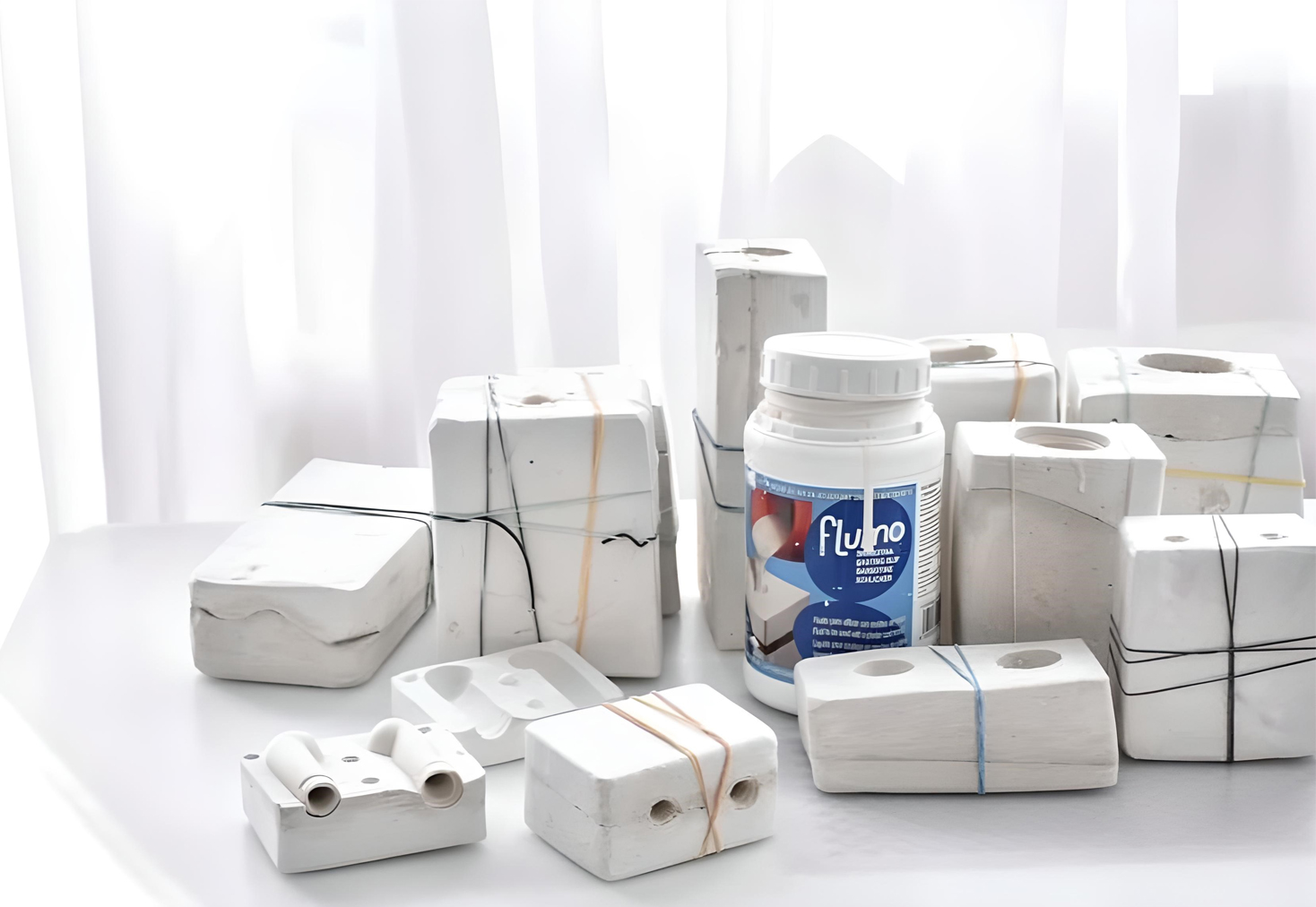
Self-hardening Casting Slip
SIO-2 FLUMO® is air drying casting slip who achieves great hardness. It is used exclusively with plaster moulds for the traditional slip casting process, getting a high quality piece with a similar strength to the fired ceramics. It is a very suitable material for crafts, especially for dolls and miniatures makers.
In liquid, the product can be dyed with any conventional water soluble pigment or dye. Once dry, it can be painted or varnished with any type of paint or varnish. It can also be polished, carved or drilled.
Conforms to European EN-71 and USA (AP non-toxic product) regulations. Does not contain food allergens.

Self-hardening

High hardness

Can be painted

Can be dyed
/FLUMO/FLUMO Muñeca Estirada @niminyschay_irina.jpg)

/FLUMO/FLUMO 2 Muñecas @niminyschay_irina.jpg)
/FLUMO/FLUMO Muñeca Parche @niminyschay_irina.jpg)
/FLUMO/FLUMO Muñecas Todas @niminyschay_irina.jpg)
How to use it
Slip preparation
When opening the container, do not discard the most liquid part of the surface. Before using, stir well until smooth, taking care not to incorporate air into the mixture (bubbles).
Let it rest for a few minutes to favor the evacuation of bubbles that could damage the finish of the piece.
If necessary, add only DISTILLED WATER. The addition of running water could modify the rheology (viscosity) of the slip.
Let it rest for a few minutes to favor the evacuation of bubbles that could damage the finish of the piece.
If necessary, add only DISTILLED WATER. The addition of running water could modify the rheology (viscosity) of the slip.
Filling the mould
Use plaster cast moulds only.
Before filling, make sure that the mould is dust free and dry.
Pour the product WITHOUT STOPPING on the side of the mouth of the mould and let it slide down the inside. Thus, the formation of bubbles will be avoided.
Wait between 10 and 20 minutes before emptying the mould. The waiting time depends on the size of the mould and the desired thickness. If you want a thicker piece, let it sit longer and fill the mould when the level drops.
Before filling, make sure that the mould is dust free and dry.
Pour the product WITHOUT STOPPING on the side of the mouth of the mould and let it slide down the inside. Thus, the formation of bubbles will be avoided.
Wait between 10 and 20 minutes before emptying the mould. The waiting time depends on the size of the mould and the desired thickness. If you want a thicker piece, let it sit longer and fill the mould when the level drops.
Emptying the mould
Lightly tap the mould before emptying. Note that the product increases its fluidity.
Empty the mould leaving it to drain well.
Keep the surplus covered in its original container for other uses.
Empty the mould leaving it to drain well.
Keep the surplus covered in its original container for other uses.
Demoulding
Open the mould after 1 hour. Wait longer for large parts.
Before reusing the mould, clean off any product residue and let it dry completely.
Before reusing the mould, clean off any product residue and let it dry completely.
Drying
NO NEEDS FIRING.
Once the piece is removed from the mould, let it dry at room temperature for 2 to 5 days. It will acquire great hardness and resistance.
It is recommended to remove the flashes before the piece dries completely.
If you wish to obtain a FASTER DRYING and greater hardness and resistance, when removing the piece from the mould, place it in a domestic oven between 100 and 120ºC for 60 minutes.
Once the piece is removed from the mould, let it dry at room temperature for 2 to 5 days. It will acquire great hardness and resistance.
It is recommended to remove the flashes before the piece dries completely.
If you wish to obtain a FASTER DRYING and greater hardness and resistance, when removing the piece from the mould, place it in a domestic oven between 100 and 120ºC for 60 minutes.
Finishing and decoration
Once dry, the object can be polished, carved or drilled prior to decoration.
The object can be decorated with any type of paint, pencil or marker. It can also be varnished. The use of varnish also guarantees greater durability of the object and improves ease of cleaning.
ATTENTION: FLUMO is not waterproof. It is not recommended to make objects that must contain water even if it is protected with a waterproofing agent.
The object can be decorated with any type of paint, pencil or marker. It can also be varnished. The use of varnish also guarantees greater durability of the object and improves ease of cleaning.
ATTENTION: FLUMO is not waterproof. It is not recommended to make objects that must contain water even if it is protected with a waterproofing agent.
Storage
Once the container is unsealed, close it tightly to avoid water loss.
If necessary, add only DISTILLED WATER. The addition of running water could modify the rheology (viscosity) of the slip.
ATTENTION: Keep the product in a cool environment avoiding high temperatures. Do not store at temperatures below 0ºC. If the product freezes, it loses its properties.
If necessary, add only DISTILLED WATER. The addition of running water could modify the rheology (viscosity) of the slip.
ATTENTION: Keep the product in a cool environment avoiding high temperatures. Do not store at temperatures below 0ºC. If the product freezes, it loses its properties.
FAQ's
What makes FLUMO casting slip different?
Compared to conventional clays used with the casting technique (earthenware or porcelain), FLUMO does not need to be fired in a ceramic kiln, since it dries in the air. Once the piece is dry, it can be painted or varnished.
Can FLUMO be used with plastic moulds?
FLUMO only works with plaster (porous) moulds. The traditional method of casting is that the mould absorbs the slippery water by capillary action, thus forming a solid wall covering the inner face of the mould. If the mould is not porous, wall formation is not achieved. For this reason, plastic or silicone moulds cannot be used.
Can FLUMO be dyed?
FLUMO liquid clay is white, which facilitates its decoration once the piece is finished. However, the slip can also be mass dyed using conventional water-soluble dyes or pigments. This technique is especially interesting in doll reproduction, thus achieving the desired flesh tone.
What are the advantages of FLUMO compared to conventional earthenware or porcelain casting slips?
FLUMO's main advantage over conventional clays is that it DOES NOT NEED FIRING. In this way, significant energy savings are achieved in the realization of the piece and the large investment involved in purchasing a ceramic kiln is avoided. FLUMO is an ideal product for use by any user who does not have a ceramic kiln.

/20780002_1.jpg)
/20784002.jpg)


